
- •Lesson (1) Principles of classification of living organisms
- •Lesson (2) Modern classification of living organisms
- •Lesson (3) Kingdom Animalia
- •Answer four questions only
- •Letter (a)
- •Letter (b)
- •Letter (c)
- •Letter (d)
- •Letter (e)
- •Letter (f)
- •Letter (g)
- •Letter (h)
- •Letter (j)
- •Letter (k)
- •Letter (l)
- •Letter (m)
- •Letter (n)
- •Letter (o)
- •Letter (p)
- •Letter (r)
- •Letter (s)
- •Letter (t)
- •Vougheir
- •Vultures
Lesson (3) Kingdom Animalia
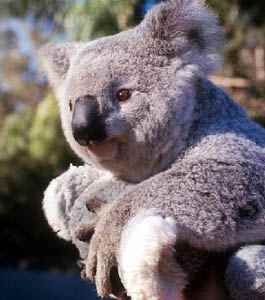
![]()
Characteristics of animals:-
1- They are multicellular eukaryotes
2- They have the ability to move and transport
3- They have the ability to quickly respond to outer environmental stimuli
4- Most of the reproduce sexually
Kingdom Animalia was divided into 9 phyla according to their structure complexity. Some of these phyla have vertebral column and called Vertebrates, while those which do not have vertebral columns are called invertebrates
![]()
Sponges: They are simple-structured immobile living organisms which have unsymmetrical bodies containing many pores and canals
Characteristics of sponges:-
1- Sponges may be flask-shaped or tube-shaped
2- The body of a sponge is hollow and has a wall containing many pores and canals. So, sponges are also known as Porifera (Porifera means pores bearer)
3- The exist alone of in colonies
4- Body wall is supported by fibres, spicules or both of them
5- Most of them are hermaphrodite and reproduce sexually by fusion of gametes.
6- Some of them reproduce asexually by budding and regeneration
Example: Sponge animal
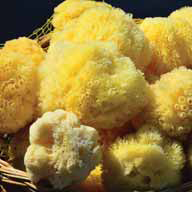
Fig. (27) Sponges
Sponges are classified as animals though they are immobile because they are multicellular heterotrophic organisms whose cells lack cell walls
They have few specific cells

Cnidaria: Aquatic animals whose bodies have radial symmetry and they have cindocytes
Characteristics of Cnidaria:-
1- Most Cnidaria are aquatic and live alone or in colonies
2- They don't have heads
3- Their bodies have a cavity called vascular digestive cavity, and the mouth is surrounded by extensions and projections called tentacles
4- Body cells are arranged in two layers, the outer layers have stinging cells (cindocytes), which protects the animal and helps it in hunting preys. Cindocytes number increases in tentacles
.
During the life cycle of Cnidaria, two forms of individuals appear, which are:-
- Polyps: They carry out all life functions except sexual reproduction
- Medusae: They are individuals responsible for sexual reproduction, they are usually mobile
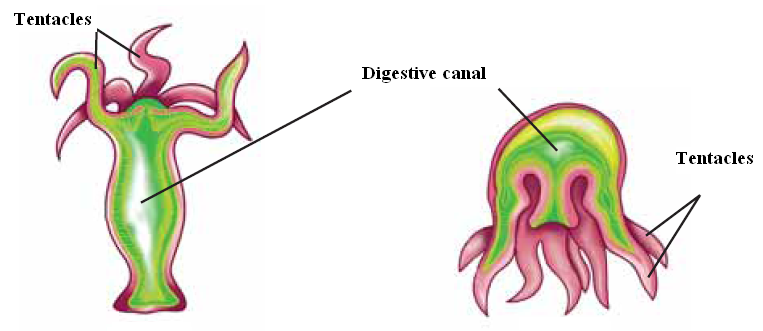
Fig. (28) Polyp and medusa phases of Cnidaria
In some Cnidaria, only polyps appear in their lives. In some of them, Medusae dominate over polyps or only both of them appear.
There are 3 classes of Cnidaria, which are:-
A- Class: Hydrozoa
Cnidaria in whose life cycles polyps dominate, most of them are aquatic and live in colonies. The rest of them live single in fresh water
Example: Hydra
B- Class: Scyphozoa
Cnidaria which spend most of their life in Medusa phase, they are aquatic animals which live in seas and oceans.
Example: Jellyfish
C- Class: Anthozoa
Cnidaria which don't have Medusa phase, all of them are aquatic and resemble flowers.
Example: Sea anemone – coral forming coral reefs
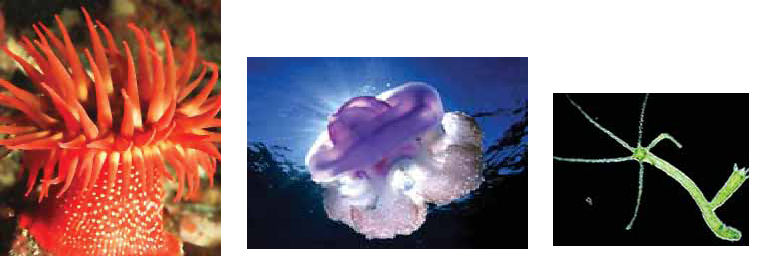
Fig. (29) Sea anemone Fig. (30) Jellyfish Fig. (31) Hydra
For reading only
Cnidaria means "nettle, sting"
Hydrozoa is composed of two words "Hydro" which means water, "Zoa" means animal
Scyphozoa is composed of two words "Schypho" which means cup, "Zoa" which means animal, as scyphozoa resemble cups
Anthozoa is composed of two words "Antho" which means flower, "Zoa" which means animal, as Anthozoa resemble flowers
![]()
Platyhelmenthes are also called flat worms
Characteristics of Platyhelmenthes
1- Worms with flat bodies and head
2- Their bodies are formed from 3 layers and have lateral symmetry
3- Most of them are parasite, and the rest are free-living
4- Most of them are hermaphrodite, and the rest are unisexual
Flats worms have three classes, which are:-
1- Class: Turbellaria
Free-living worms, most of them live in fresh water and their lengths are few centimeters
Example: Planarian worm
2- Class: Trematoda
Worms which parasite on both humans and animals causing dangerous diseases.
Example: Bilharzias worm
3- Class: Cestoda
Parasite worms which live in the small intestine of humans and animals causing gastric disorders, anemia and weakness. They have tape-shaped bodies whose length may reach few meters.
Example: Tape worms
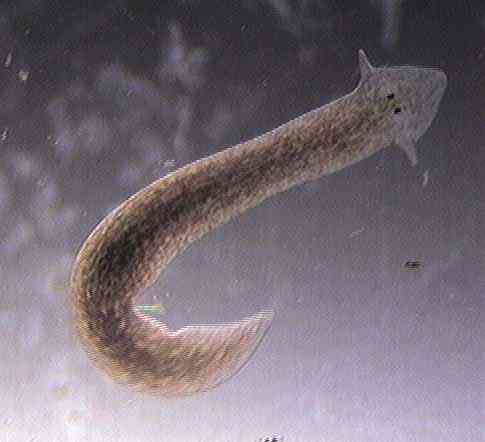
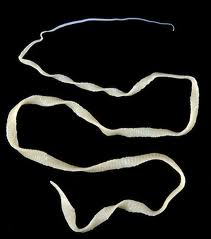
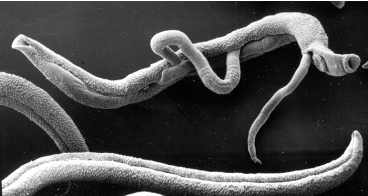
Fig. (31) Planarian Worm Fig. (32) Tape worm Fig. (33) Bilharzias worm
For reading only
Platyhelminith is composed of two words "Platy" means flat, "helminth" worm
Turbellaria is derived from word "turb" which means "disturb", as Turbellaria movement in water disturbs it
Trematoda is derived from word "trema" which means hole, as they penetrate living organisms
Cestoda means "stitched"
![]()
Characteristics of nematoda (round worms)
1- They have cylindrical shapes with two ends tapered, their sizes range from microscopic range to few meters
2- Their bodies are formed from 3 layers and have lateral symmetry
3- They have alimentary canals with two openings: mouth and anus
4- Unisexual organisms
5- They live in all environments, some of them are free-living in water and soil, and the others parasite on animals, plants and humans
Examples: Ascaris worm – Falaria worm
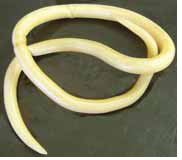
Fig. (34) Ascaris worm
For reading only
Nematoda means "thread-like"
![]()
They are earth worms which live inside soil in tunnels, they aerate the soil and increase its fertility
They are common examples of segmented worms, which have the following characteristics:-
1- They are free-living in salt water, freshwater and soil. Small no. of them are external parasites
2- Their bodies are divided into rings and have thorns in their skins which help them in movement
3- Some of them are unisexual, an a small no. are hermaphrodite
Examples: Earth worms – Medical leech
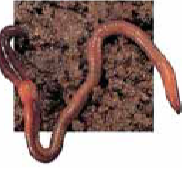
Fig. (35) Earth worms
![]()
Characteristics of anthropoda:-
1- Their bodies are divided into a number of segments, some of these segments have paired identical appendages.
2- The segmented body is divided into many parts covered by exoskeleton
Anthropoda have 3 classes, which are:-
A- Class: Crustacea
Characteristics of crustacean:-
1- Their bodies consist of two parts (Cephalothorax – abdomen)
2- The body is covered with a chitinous cuticle
3- They have joint appendages which have different shapes to perform different functions and complex eyes
4- They breathe by gills
Examples: Shrimps – Crap – Crayfish

Fig. (36) Crap Fig. (37) Shrimps
B- Class: Arachnida
Characteristics of Arachnida:-
1- Their bodies are divided into two regions (Cephalothorax - abdomen)
2- They have four pairs of legs for movement
3- They respire by book lungs or air trachea
4- They have simple eyes and they are unisexual
Examples: Spiders – Scorpions

Fig. (38) Scorpion Fig. (39) Spider
C- Class: Insecta
Characteristics of insecta:-
1- Their bodies are divided into head, abdomen and chest (thorax)
2- They have a pair of complex eyes and two pairs of wings (which may be absent in some insects such as ants, or be only one pair as in domestic flies)
3- They breath by air trachea
4- They have three pairs of legs
Examples: Ants – Bees – Cockroaches – Locusts – Butterflies – Mosquito

Fig. (38) Mosquito Fig. (39) Locust Fig. (40) Bee Fig.(41) Fly
D- Class: Myriapods
Characteristics of Myriapods:-
1- Their bodies are divided into a group of segments and consist of head and trunk
2- They have many legs
3- They breathe by air trachea
Examples: Caterpillar, which has 44 legs
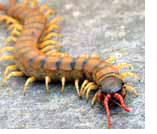
Fig. (42) Caterpillar
For reading only
Cephalothorax is composed of two terms "Cephal" which means head or brain, "thorax" which means "chest, thorax". Cephalothorax consists of a head and thorax
Myriapods consists of two terms, "Myria" which means many, "pods" which means legs
![]()
Characteristics of Mollusca:-
1- Most of them live in salt water, some of them in freshwater and a small no. on the ground
2- They have soft bodies and has a muscular foot for movement
3- They have calcareous shells that may be external, internal, absent or unseen
4- They have heads (which carry sensation organs) and may be absent
5- They have an organ resembling tongue and carries teeth called Radula, which is used for feeding
6- Most of them are unisexual, and a small no. is hermaphrodite
Mollusca are divided into many classes
A- Class: Gastropoda
They move by gliding on the projection (extension) of the foot under their bodies, most of them have spiral shells composed of one piece. Some of them live in water and breathe by gills. And the others live on land and breathe by simple lungs
Example: Snails – Slugs
B- Class: Bivalvia
The shells of these Mollusca are composed of two hinged parts
All the individuals of this class are aquatic and breathe by gills
Example: Oyster – Mussel
C- Class: Cephalopoda
A part of their feet are modified into tentacles which exist in the head and
away from the rest of the body
Examples: Octopus – squid

Fig. (33) Octopus Fig. (34) Oyster Fig. (35) Snail
For reading only
- (Gastro-) Stomach, (Pod) Foot. So, gastropod means (Stomach foot)
- (Bivalvia) Double-valved (have two halves)
- (Cephal-) Head, (Pod) Foot. So, cephalopod means (Head foot)
![]()
Characteristics of Echinodermata:-
1- The body is not divided (segmented) into parts, it has a solid endoskeleton
2- Many of them have prickles and calcareous plates (sheets) on the body wall
3- They have structures which resemble suckers called tube feet
4- The body may be cylindrical or star-shaped
5- They move by arms, prickles or tube feet
6- They are unisexual, they reproduce sexually by formation of gametes, and asexually by regeneration
7- They don't have anterior (front) or posterior (back) ends, but their bodies have two sides: Oral side (which has the mouth) – aboral side (opposite to oral side)
Echinodermata have 3 classes:-
A- Class: Asteroidea
They are animals with five or more arms which extend in a radial system from the central disc
Examples: Star fish
B- Class: Echinoidea
They are animals which do not have arms, but their bodies are covered with prickles (for movement and protection). They have five sharp peak-shaped teeth used in fragmentation and chewing of food.
Example: Sea Urchin
C- Class: Holothuroidea
They are animals which have soft and long bodies with no arms, their endoskeletons are reduced
Example: Sea cucumber

Fig. (36) Sea cucumber Fig. (37) Sea urchin Fig. (38) Starfish
For reading only
- (Echino-) Hedgehog, (-Dermata) Skin
- (Aster-) Star, (-oidea) Animal
- (Holothuroid) A genus of animals in Latin, (oidea) Animal
![]()
Characteristics of Chordata
1- They are the most developed animals
2- Their fetuses have skeletal structures in their backs called "Notochord", which may stay inside the animal till its death. Notochord turn into vertebral column is most Chordata
(N.B: All the 8 phyla we mentioned before phylum Chordata belong to invertebrates, which do not have vertebral column)
Chordata phylum is divided into sub-phylum, the most important on of them is Sub-phylum vertebrata
![]()
Characteristics of vertebrata:-
1- Notochord appears in them in embryonic stage. As the fetus grows up, notochord turns into vertebral column, which surrounds and protects the spinal cord.
2- They have endoskeletons composed of vertebral column, skull and limps
3- Their hearts have many chambers
4- They have blood flowing in blood vessels in a closed cycle, which provides all body parts with oxygen and nutrients
Sub-phylum vertebrata has many classes:-
A- Class: Agnatha
Characteristics of Agnatha:-
1- They are fish which have a circular mouth resembling funnel, it has many teeth and no jaws
2- They have thin bodies resembling those of snakefish
3- They do not have double fins
4- They have cartilaginous skeletons
5- They are parasites which stick to big fish through their mouths, as they fix themselves to those fish by their teeth. They bite their meat by their rough tongues which resemble files
E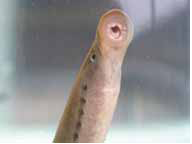 xample:
Lampreys
fish
xample:
Lampreys
fish
Fig. (39) Lampreys
For reading only
Lamprey is derived from Latin verb "Lampere" which means lick
Agnatha is composed of two terms: "A-" which means without, "gnathos" which means jaw. Agnatha means "Without jaws"
B- Class: Chondrichthyes (cartilaginous fish)
Characteristics of Chondrichthyes
1- They are aquatic fish with cartilaginous endoskeleton
2- Their mouths are located in the abdomen and has two jaws carrying some rows of teeth which help them in predation
3- They have double fins
4- Their bodies are covered with scales resembling teeth
5- They have air bladders in their bodies for floating on the surface of water
6- Their gill opening are not covered
7- They are unisexual (Sexes are separate), and fertilization is internal
Examples: Shark fish – Whiptail stingray

Fig. (40) Shark Fig. (41) Whiptail stingray.
For reading only
Chondrichthyes is composed of two terms: (Chondr-) which means cartilage, (-ichthyes) which means fish. So, Chondrichthyes means "Cartilage fish"
C- Class: Osterichthyes (bony fish)
Characteristics of Osterichthyes
1- They are fish which live in both salt water and freshwater
2- They have bony endoskeletons, and their mouths are located in the body front
3- They have single and double (paired) fins
4- Their bodies are covered with bony scales
5- Their gill openings are covered with gill cover
6- They are unisexual (sexes are separate) and fertilization is external
Example: Bouri fish – Bolty fish

Fig. (41) Bolty fish Fig. (42) Bouri fish
D- Class: Amphibia
Characteristics of Amphibia
1- They are cold-blooded animals
2- They are have four limps and have five fingers (pentadactyl)
3- They are unisexual (sexes are separate), and fertilization is external
4- In embryonic stages, they live in water and breathe by gills. The adult stage live on land and breathe air by lungs and skin
Examples: Salamander – Toads – Frogs
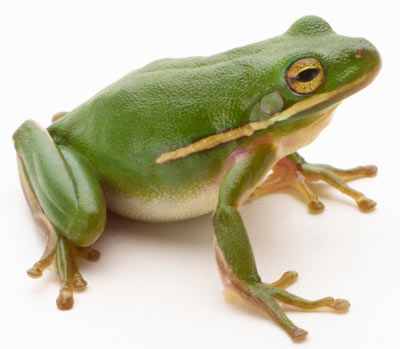
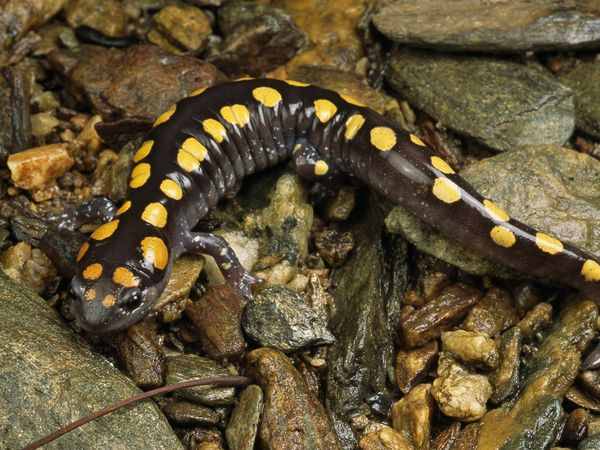
Fig. (43) Frog Fig. (44) Salamander
E- Class: Reptilia
Characteristics of Reptilia
1- Cold-blooded animals (their temp. is equal to that of environment they live in)
2- Body is formed from four regions: Head – Neck – Trunk – Tail
3- They have four limbs (Quadripartite) and weak five fingers (pentadactyl). Each finger ends with a horny claw
4- Some reptile doesn't have limbs and move by creeping (Ex. snakes)
5- They breath air by lungs
6- Sexes are separate (unisexual) and fertilization is internal
7- They lay eggs with skinny or calcareous peels
8- Skins are dry and covered by thick horny scales, which may be horny plates
Examples: Lizards – Chameleon – Gecko – Tortoise – Crocodile – Snakes

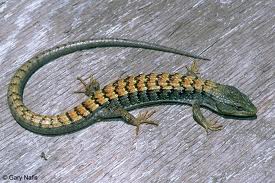
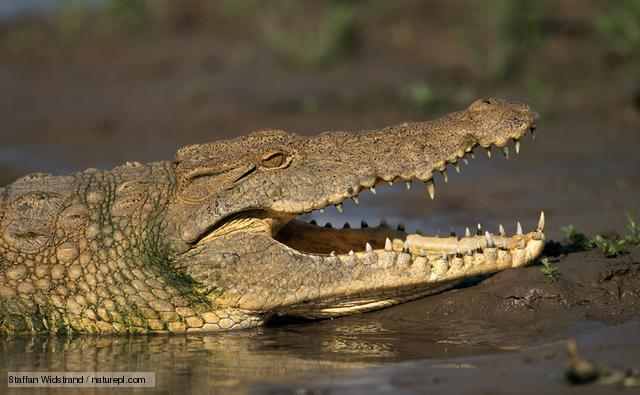
Fig. (45) Snakes Fig. (46) Lizard Fig. (47) Crocodile
F- Class Aves (Birds)
Characteristics of birds:-
1- Warm-blooded animals (they have constant temp.)
2- Their bodies are covered with feather
3- They have four limps, the two forelimbs are modified to wings for flying, and each hind limb has four fingers with horny claws for climbing, movement, predation or swimming
4- Their bones are light and hollowed, sternum bone (a bone in the chest) is flat to fix the strong chest muscles which move the wings during flying
5- They breathe air by lungs, and their bodies have air sacs which stores additional air quantity during flying
6- Sexes are separate (unisexual) and fertilization is internal, they lay eggs
Examples: Pigeons – Swallows – Vultures – eagles – ostriches
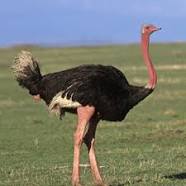
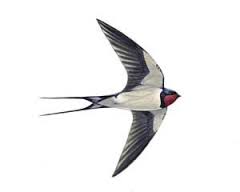
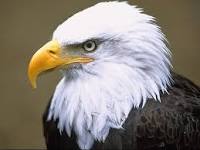
Fig. (48) Swallow Fig. (41) Ostrich Fig. (42) Vulture
G- Class: Mammalia
Characteristics of Mammalia
1- They are hot-blooded animals
2- Their bodies have 4 parts: Head – Neck – Chest (Thorax) – Abdomen
3- Their skins are covered with hair
4- They have four polydactyl (five- fingered) limbs with nails, claws or hooves
5- They have differentiated non-similar teeth (Molars – Tusks – Incisors)
6- Sexes are separate (unisexual) and fertilization is internal
7- Most of them give birth, and they have mammary glands which secrete milk for babies
8- They breathe by lungs
Mammalia has three subclasses, which are:-
Subclass: Eutheria |
Subclass: Methatheria |
Subclass: Prototheria |
- They are placental organisms which are born fully developed from mother - They feed on milk secreted by mammary glands of mother |
- Young born is not fully developed. So mother has to keep it inside a pouch - Young born feeds by suckling milk secreted from nipples inside the pouch until it is fully developed |
- They do not give birth, but they lay eggs. Babies feed on milk secreted from mammary glands on the abdomen of mother. They have cloacal opening through which wastes and eggs emerge |
- They have many organisms (Ex. human) |
- Kangaroo |
- Duck-pilled platypus - Echidna |
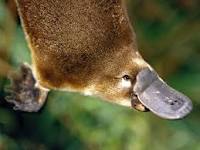
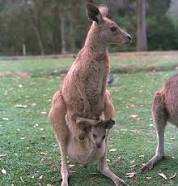
Fig. (43) Duck-pilled platypus Fig. (44) Kangaroo
For reading only
(Proto-) First (primitive) (-theria-) Mammals (Meta- Changed)
(Eu-) Real
Subclass Eutheria (real mammals) are divided into many orders:-
A- Order: Edentata (E- without, Dentata Teeth, Without teeth)
Most of them are without teeth, some of them have only front teeth
They have strong curved claws
Example: Armadillo – Sloth

Fig. (45) Armadillo
B- Order: Insectivora (-Vora Eater, Insects eaters)
They feed on insects
Their front teeth extend like pincers for predation on two rows
Example: Hedgehog

Fig. (46) Hedgehog
C- Order: Carnivora (Carni- Meat, Vora eater, Meat eaters)
They have large pointed canines and feed on meat
Their front molars are sharp, and back molars are broad and crushing
They have sharp, strong and curved claws
Examples: Cat – Dog – Tiger – Fox – Wolf – Seal
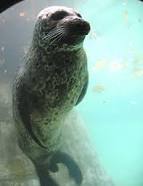
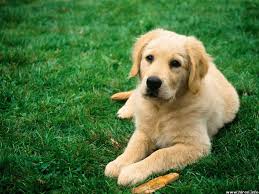
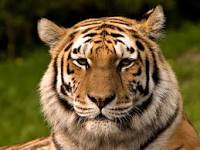
Fig. (47) Dog Fig. (48) Seal Fig. (49) Tiger
D- Order: Perissodactyla (Perisso Odd or uneven, Dactyla Finger)
They are herbivorous animals (plant-eaters)
They have an odd number (1,3,5…etc) of fingers covered with horny hooves
They have large teeth, which are adapted for crushing food
Examples: Horse – Donkey – Zebra - Rhinoceros

Fig. (50) Zebra
E- Order: Artiodactyla (Artio even, Dactyla Finger)
They are herbivorous animals
They have an even number (2,4,6…etc) of fingers covered with horny hooves
Examples: Sheep – Goats – Giraffes – Gazelles – Camels
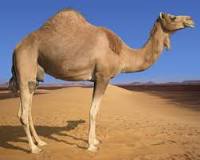
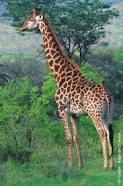
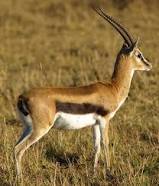
Fig. (51) Giraffe Fig. (52) Camel Fig. (53) Gazelle
F- Order: Cetacea (It means whales in Latin)
They are huge aquatic animals which live in seas and oceans
The two forelimbs are modified to paddles, they have no hind-limbs
 They breath atmospheric air
by lungs
They breath atmospheric air
by lungs
Sexes are separate, they give birth their babies suckle
milk from mammary glands
Examples: Dolphins – Whales
G-Order: Rodentia (means gnawers in Latin)
 They have a pair of
Incisors in
bother upper and lower jaws. These incisors are sharp as anvil
They have a pair of
Incisors in
bother upper and lower jaws. These incisors are sharp as anvil
They have long tails and small ears
Examples: Mice – Rats – Squirrel (Chipmunk) – Jerboa
H- Order: Lagomorpha (means rabbit-shaped in Latin)
 They have two pairs of
incisors in the upper jaw and one pair in lower jaw
They have two pairs of
incisors in the upper jaw and one pair in lower jaw
They have short tails and long ears
Examples: Rabbits – Hares
I- Order: Chiroptera (Chiro Hand, pteron Wing, Have wings instead of hand)
Their forelimbs are modified to wings, where the second and fifth fingers of each forelimb elongated, and skin extended from the body to these fingers
 They become active at night
They become active at night
Examples: Bats
J -
Order: Proboscidea
(Pro
in front, boscide
to feed)
-
Order: Proboscidea
(Pro
in front, boscide
to feed)
They have long muscular trunks
The front teeth grow forming elephant's fangs
K -
Order: Primates
-
Order: Primates
They are the most developed mammals
They have two pairs of polydactyl limbs
Thumb finger is away from the other fingers
They have developed nervous system and big brains
Examples: Monkeys – Lemurs – Gorillas – Chimpanzee – Apes – Human (most developed living organisms
There are other living organisms which do not subject to Robert Whittaker's classification because they have the characteristics of both living and non living things
Examples: Viruses – Viroids – Prions
![]()
They link between living and non living things:-
Non living things characteristics in viruses :-
- They do not have any cell structures
- They appear in a crystalline form
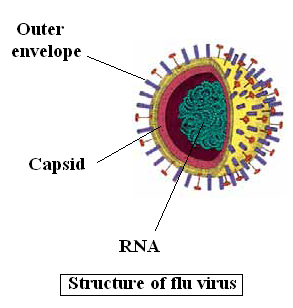 -
They cannot perform any vital processes outside host cell
-
They cannot perform any vital processes outside host cell
Living organisms characteristics in viruses:-
- They have DNA or RNA
- They can multiply and reproduce inside host cell
Virus consists of:-
1- DNA or RNA
2- Protein coat called capsid
Viruses have very small sizes (20- 300 nanometer)
and cannot be seen
Viruses have different shapes: they may be simple (rod-shaped, spiral, spherical, polyhedron) or very complex
Viruses are obligatory parasites: as they don't multiply or reproduce unless they are inside a host cell
Viruses are highly-specific organisms: Every virus has certain living organisms and cells. Viruses which attack plants cannot attack animals or humans, and those which attack the brain cannot attack the liver
![]()
They are non-living organisms (pathogens – disease-causing) which are more simple than viruses
They consist of small ring-shaped RNA strips in the form of double helix
They do not have protein coat (capsid)
Viroids enter the nucleus of the infected cell, and directs metabolism to produce more Viroids. They cause many diseases to plants such as:-
- Potato spindle tuber disease
- Cucumber pale fruit disease
Viroids may spread quickly, but they cannot be determined because they do not destroy host cells like viruses
![]()
Prions are non living organisms which are more simple than Viroids, as they are composed of only protein and do not have any nucleic acids.
They spread inside the infected tissues of organisms causing disease which destroy their central nervous system, as they turn brain into a sponge-like mass full of pores like sieves. This may cause death
Prions infection is common in sheep and livestock, they cause mad cow disease. Prions causes the infection of human with two diseases whose symptoms are like those of mad cow.
Mad cow Prions can transfer to human from meat products of cows suffering from the disease (Hamburgers, sausages, cosmetics and medicine containing substances extracted from cows…etc)
The transfer of Prions to human wasn't proved till now due to the extent of incubation period of mad cow disease in human
![]()
A- Modern techniques used in classifying living organisms
In the past, scientists classified living organisms according to the similarities and differences between them according to shape
Later (hundreds years ago), Scientists classified living organisms on the basis of determining the degree of similarity and difference between them (evolutionary relation), which depends on their researches on anatomy which:-
- Determine the anatomic similarities
- Determine the similarities in natural structures, such as skeletal and glandular structure.
- The study of embryonic development
Nowadays, Scientists discovered new techniques by which we can find the similarities and differences of living organisms, this happened due to:-
- The invention of electronic microscope, which developed microscopic techniques
- The dramatic development of biochemical analysis
Modern techniques of the classification of living organisms depends on the scientific researches about DNA sequences (which we studied in the previous chapter). Scientists discovered that the more similarity is between the sequence of DNA nucleotides of living organisms, the more alike are living organisms
B- New discoveries in biology
Extract of sponges:-
They play an important role in medicine and chemical industries, as scientists discovered new compounds in some sponges, which can be used as anti-cancer and antibiotics
Extract of jellyfish
Poisons by which jellyfish hunt their preys have many medical uses
![]()
Porifera (Sponges): Simple-structured animals which have unsymmetrical bodies with a lot of canals and pores
Cnidaria: They are animals with radial symmetry and have stinging cells (cindocytes)
Polyps: They are phases of Cnidaria which carry out all vital processes except sexual reproduction
Medusae: They are phases of Cnidaria which are responsible for sexual reproduction
Anthropoda: Animals whose bodies are divided into a number of segments which carry some pairs of appendages.
Mollusca: Animals having soft bodies covered by skin tissue called the mantle, which secretes a protective calcareous shell. It may be internal or external
Echinodermata: Animals which have solid endoskeletons and many of them have prickles and calcareous plats in their body walls
Chordata: A group of animals which have structures in their back called notochords
Viruses: Organisms which have the characteristics of both living and non living things
![]()
1- Sponges are also called Porifera
Because the walls of their bodies have many canals and pores
2- Sponges are classified as animals although they cannot move
Because they are multicellular heterotrophic living organisms whose cells lack cell walls.
3- Cnidaria have cindocytes (stinging cells)
To protect them and help them in predation
4- Jellyfish is from Cnidaria
Because it live in the sea, it doesn't have a head, its body has a digestive cavity, its mouth is surrounded by tentacles and it has cindocytes for protection and predation
5- Hydra belongs to class hydrozoa of Cnidaria
Because in its life cycles, polyps dominate over Medusae
6- Jelly fish belong to class scyphozoa
Because they spend most of their life in medusa stage
7- Sea anemone belongs to class Anthozoa
Because its doesn't have Medusae stage and resembles flowers in shape
8- Planaria worm belongs to phylum Platyhelmenthes
Because it has flat body which have lateral symmetry and composed of 3 layers of tissues
9- Bilharzias worm belongs to Trematoda class
Because they parasite on humans causing dangerous diseases
10- Falaria (or Ascaris) worm belongs to phylum nematoda
Because it has round (cylindrical) shape and its alimentary canal has two openings: mouth – anus.
11- Shrimps belong to Curstacea
Because their bodies are divided into two parts (Cephalothorax – abdomen), their
Bodies are covered with chitinous cuticle and breathe by gills
12- Spiders are from arachnids
Because their bodies are divided into two parts (Cephalothorax – abdomen), they have four pairs of legs for movement and simple eyes
13- Ants are from insects
Because their bodies are divided into three parts (Head – thorax – abdomen), they have complex eyes and three pairs of legs for movement
14- Caterpillar is from Myriapods
Because they have numerous legs (44 legs)
15- Snails are from Mollusca
Because they have soft bodies covered with calcareous shells and muscular feet for movement. They have an organ resembling tongue called Radula
16- Oyster is from Bivalvia class of Mollusca
Because its shell is composed of two hinged parts, it lives in water and breathe by gills
17- Squids are from cephalopods of Mollusca
Because part of their feet are modified to tentacles which exist in the head away from the rest of the body.
18- Starfish is from Echinodermata
Because its body is not segmented and has solid endoskeleton, it is star-shaped, its body has two sides (Oral side – aboral side) and it reproduces asexually by regeneration
19- Sea urchin belongs to class Echinoidea
Because They are animals which do not have arms, but their bodies are covered with prickles (for movement and protection). They have five sharp peak-shaped teeth used in fragmentation and chewing of food.
20- The importance of vertebral column in vertebrata sub-phylum individuals
Because it surrounds and protects the spinal cord
21- Lampreys belong to class Agnatha
Because:-
1- They are fish which have a circular mouth resembling funnel, it has many teeth
and no jaws
__
2- They have thin bodies resembling those of snakefish
3- They do not have double fins
4- They have cartilaginous skeletons
5- They are parasites which stick to big fish through their mouths, as they fix
themselves to those fish by their teeth. They bite their meat by their rough tongues
which resemble files
22- Shark fish belong to class Chondrichthyes
Because:-
1- They are aquatic fish with cartilaginous endoskeleton
2- Their mouths are located in the abdomen and has two jaws carrying some rows
of teeth which help her in predation
3- They have double fins
4- Their bodies are covered with scales resembling teeth
5- They have air bladders in their bodies for floating on the surface of water
6- Their gill opening are not covered
7- They are unisexual (Sexes are separate), and fertilization is internal
23- Bolty fish is from Osterichthyes
Because:-
- They have bony endoskeletons, and their mouths are located in the body front
- They have single and double (paired) fins
- Their bodies are covered with bony scales
- Their gill openings are covered with gill cover
- They are unisexual (sexes are separate) and fertilization is external
24- Salamanders belong to class Amphibia
Because:-
1- They are cold-blooded animals
2- They are have four limps and have five fingers (pentadactyl)
3- They are unisexual (sexes are separate), and fertilization is external
4- In embryonic stages, they live in water and breathe by gills. The adult stage
live on land and breathe air by lungs and skin
25- Chameleons belong to class Reptilia
Because:-
1- They are cold-blooded animals
2- Body is formed from four regions: Head – Neck – Trunk – Tail
3- They have four limbs (Quadripartite) and weak five fingers (pentadactyl). Each
finger ends with a horny claw
4- Some reptile doesn't have limbs and move by creeping (Ex. snakes)
5- They breath air by lungs
6- Sexes are separate (unisexual) and fertilization is internal
7- They lay eggs with skinny or calcareous peels
8- Skins are dry and covered by thick horny scales, which may be horny plates
26- Ostriches are from birds (Aves)
Because:-
1- They are warm- blooded animals
2- Their bodies are covered with feather
3- They have four limps, the two forelimbs are modified to wings for flying, and
each hind limb has four fingers with horny claws for climbing, movement,
predation or swimming
4- Their bones are light and hollowed, sternum bone (a bone in the chest) is flat
to fix the strong chest muscles which move the wings during flying
5- They breathe air by lungs, and their bodies have air sacs which stores
additional air quantity during flying
6- Sexes are separate (unisexual) and fertilization is internal, they lay eggs
27- Lions are from mammals (belong to class Mammalia)
Because:-
1- They are hot-blooded animals
2- Their bodies have 4 parts: Head – Neck – Chest (Thorax) – Abdomen
3- Their skins are covered with hair
4- They have four polydactyl (five- fingered) limbs with nails, claws or hooves
5- They have differentiated non-similar teeth (Molars – Tusks – Incisors)
6- Sexes are separate (unisexual) and fertilization is internal
7- Most of them give birth, and they have mammary glands which secrete milk for
babies
8- They breathe by lungs
28- Duck-pilled platypus belongs to subclass Prototheria
Because they do not give birth, but they lay eggs. Babies feed on milk secreted from mammary glands on the abdomen of mother. They have cloacal
opening through which wastes and eggs emerge
29- Duck-pilled platypus is the intermediate link between birds and mammals
Because it lays eggs and do not give birth (birds characteristics), but its babies feed by suckling the milk secreted from mammary glands on its abdomen (mammals characteristic)
30- Kangaroo belongs to Methatheria
Because it gives birth to not fully-developed babies, so it keeps them inside their pouch, where they suckle the milk secreted from its mammary glands until they become fully developed
31- Kangaroo puts his baby in a pouch
Because young born is not fully developed, so it is kept inside a pouch where its suckle the milk secreted from its mammary gland, until it becomes fully developed
32- Armadillo is a mammal which belongs to order Edentata
Because it doesn't have any teeth and have strong curved claws
33- Hedgehog is a mammal which belongs to order Insectivora
Because it feeds on insects and its front teeth are extended like pincers for predation
34- Dogs are mammals which belong to order Carnivora
Because they feed on meat, their front molars are sharp and back molars are broad and crushing and they have sharp and curved claws
35- Zebras are mammals which belong to order Perissodactyla
Because each limb has an odd number of fingers, which are covered with hooves. They also have large teeth for crushing food
36- Camels are mammals which belong to order Artiodactyls
Because each limb of it has an even number of fingers, which are covered with hooves.
37- Dolphins are mammals although they live in water
Because they feed their babies with milk secreted from mammary glands and they also have lungs for breathing atmospheric air
38- Mice are mammals which belong to order rodentia
Because they have a pair of jaws in each of the upper and lower jaws. They also have short ears and long tails
39- Rabbits are mammals which belong to order lagomorpha
Because they have two pairs of incisors in the upper jaw and one pair in the lower jaw. They also have long ears and short tails
40- Bats are mammals although they can fly
Because they give birth and have mammary glands
41- Viruses has the characteristics of both living and non living things
Non living things characteristics in viruses :-
- They do not have any cell structures
- They appear in a crystalline form
- They cannot perform any vital processes outside host cell
Living organisms characteristics in viruses:-
- They have DNA or RNA
- They can multiply and reproduce inside host cell
42- Viruses are obligatory parasites
Because they cannot reproduce unless the are inside host cell
43- It is hard to detect Viroids in infected cells
Because Viroids do not destroy the cells they parasite like viruses
44- Viroids are harmful to plants
Because some Viroids cause diseases to plants such as pale cucumber
![]()
1- Choose the correct answer
1- ……… animal belongs to phylum Porifera
A- Lampreys B- Sponges C- Jellyfish D- Bats
2- Animals of ……… phylum has stinging cells
A- Chordata B- Platyhelmenthes C- Cnidaria D- Annelida
3- In the life cycle of ……., polyps dominate over Medusae
A- Hydra B- Jellyfish C- Sea anemone D- Coral reef
4- In the life cycle of ……., Medusae dominate over polyps
A- Hydra B- Jellyfish C- Sea anemone D- Coral reef
5- Planaria worm belongs to class ……. of phylum Platyhelmenthes
A- Turbellaria B- Trematoda C- Cestoda D- Annelida
6- Ascaris worm belongs to ……… phylum
A- Nematoda B- Platyhelmenthes C- Annelida D- Anthropoda
7- Craps are from ………
A- Crustaceans B- Insects C- Arachnids D- Myriapods
8- Caterpillar is from ……..
A- Crustaceans B- Insects C- Arachnids D- Myriapods
9- Bees belong to ………..
A- Crustaceans B- Insects C- Arachnids D- Myriapods
10- Scorpions belong to ……….
A- Crustaceans B- Insects C- Arachnids D- Myriapods
11- ……….. are animals whose shells are composed of two hinged parts
A- Octopus B- Mussel C- Slugs D- Squids
12- Sea urchin belongs to ……… class of Echinodermata
A- Asteroids B- Echinoidea C- Holothuroidea D- Turbellaria
13- …….. is from cartilaginous fish
A- Bouri B- Bolty C- Shark D- Shrimps
14- ……… are from amphibians
A- Frogs B- Geckos C- Jerboa D- Snakes
15- Fetuses of ……….. phylum have notochords
A- Chordata B- Porifera C- Mollusca D- Anthropoda
16- ……….. is from Eutheria
A- Platypus B- Kangaroo C- Lions D- Chameleons
17- ……….. is from Prototheria
A- Human B- Lions C- Platypus D- Kangaroo
18- ……… is an animal which lays eggs and has mammary glands
A- Platypus B- Kangaroo C- Lions D- Chameleons
19- …….. animals have no teeth
A- Lampreys B- Lions C- Vultures D- Armadillo
20- Sloth belongs to ………. order of Mammalia
A- Edentata B- Chiroptera C- Cetacea D- Primates
21- ………….. have an even no. of fingers in each limb
A- Rhinoceros B- Horses C- Donkeys D- Sheep
22- Zebras belong to ………… order of Mammalia
A- Artiodactyla B- Chiroptera C- Perissodactyla D- Primates
23- …………. animals belong to Rodentia order
A- Rats B- Rabbits C- Bats D- Flies
24- Elephants belong to ………. Order
A- Edentata B- Chiroptera C- Proboscidea D- Primates
2- Write the scientific term
1- They are animals with radial symmetry and have stinging cells (cindocytes)
2- They are phases of Cnidaria which carry out all vital processes except sexual reproduction
3- They are phases of Cnidaria which are responsible for sexual reproduction
4- Animals whose bodies are divided into a number of segments which carry some pairs of appendages.
5- Animals having soft bodies covered by skin tissue called the mantle, which secretes a protective calcareous shell. It may be internal or external
6- Animals which have solid endoskeletons and many of them have prickles and calcareous plats in their body walls
3- Compare between
1- Cartilaginous and bony fish
2- Insects and arachnids
3- Annelida and Nematoda
4- Birds and reptiles
4- Classify the following living organisms
1- Spider
2- Jellyfish
3- Bilharzias worm
4- Octopus
5- Bean
![]()
1- Choose the correct answer
1- Sponges 13- Shark
2- Cnidaria 14- Frogs
3- Hydra 15- Chordata
4- Jellyfish 16- Lions
5- Turbellaria 17- Platypus
6- Nematoda 18- Platypus
7- Crustaceans 19- Armadillo
8- Myriapods 20- Edentata
9- Insects 21- Sheep
10- Arachnids 22- Perissodactyla
11- Mussel 23- Rats
12- Echinoidea 24- Proboscidea
3- Compare between
1- Cartilaginous and bony fish
Bony fish |
Cartilaginous fish |
- They have bony endoskeletons - Their bodies are covered with bony scales - Their gill openings are covered with gill covers - The fertilization is external Ex. Bolty fish – Bouri fish |
- They have cartilaginous endoskeletons - Their bodies are covered with teeth-like scales - Their gill openings are not covered with gill cover - The fertilization is internal Ex. Whiptail stingray – Shark fish |
2- Insects and arachnids
-
Arachnids
Insects
- Their bodies are divided into two parts (Cephalothorax – Abdomen)
- They have 4 pairs of legs
- They have simple eyes
Ex. Spiders – Scorpions
- Their bodies are divided into three parts (Head – thorax – Abdomen)
- They have 3 pairs of legs
- They have complex eyes
Ex. Bees – Ants
3- Annelida and Nematoda
Nematoda |
Annelida |
- They are ring-shaped - Their bodies are formed from 3 layers - They are unisexual Ex. Ascaris worm – Falaria worms |
- They have round cylindrical shapes - Their bodies are divided into rings - Some of them are unisexual, others are hermaphrodite Ex. Earth worms |
4- Birds and reptiles
Birds |
Reptiles |
- Warm-blooded animals - They have four limbs, forelimbs are modified to wings and hind-limbs have 4 fingers each Ex. Ostriches - Vultures |
- Cold-blooded animals - they have four limbs with 5 weak fingers, some of them don't have limbs are move by creeping Ex. Snakes - Chameleons |
5- Classify the following organisms See classification dictionary page
![]()
